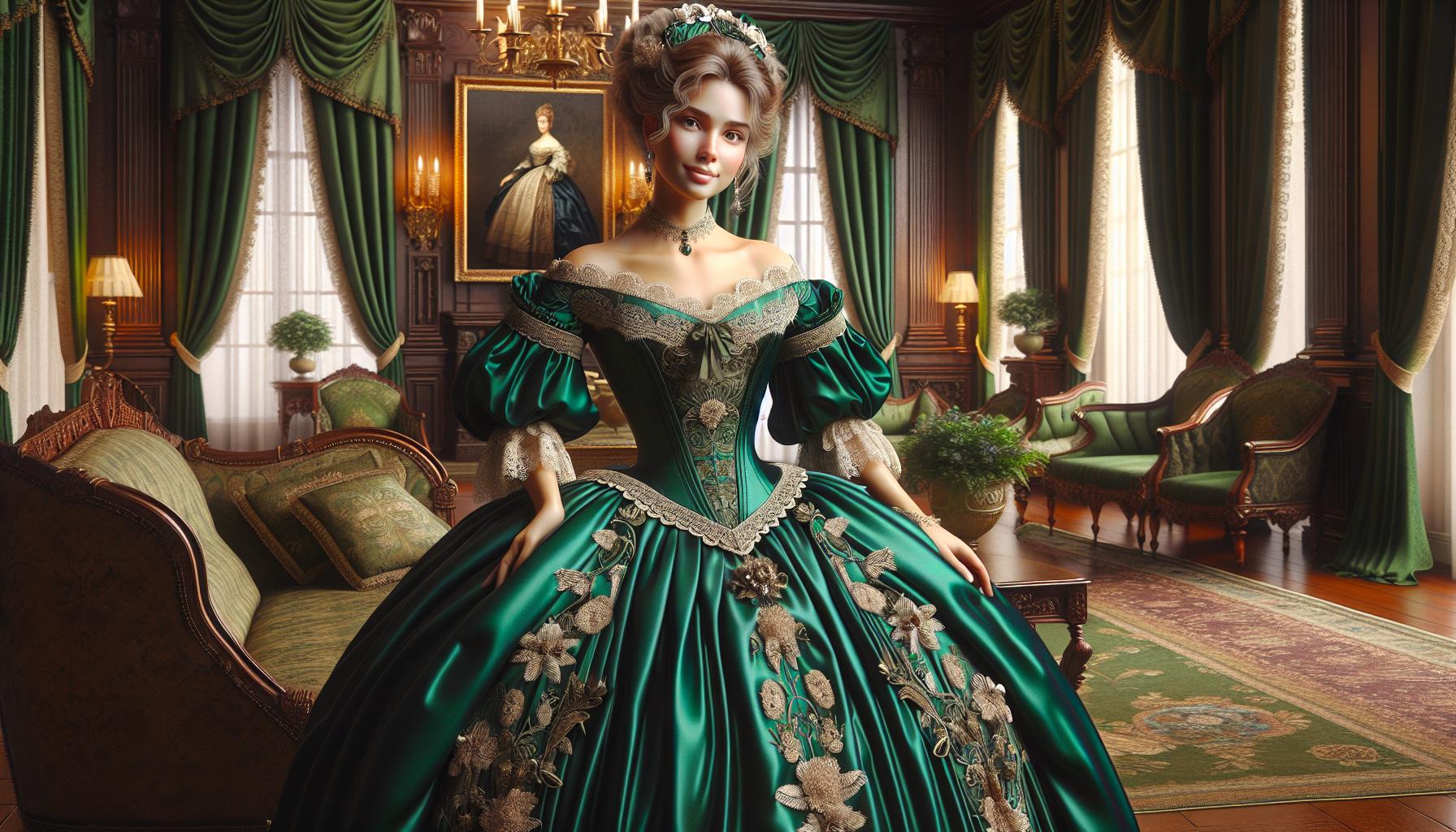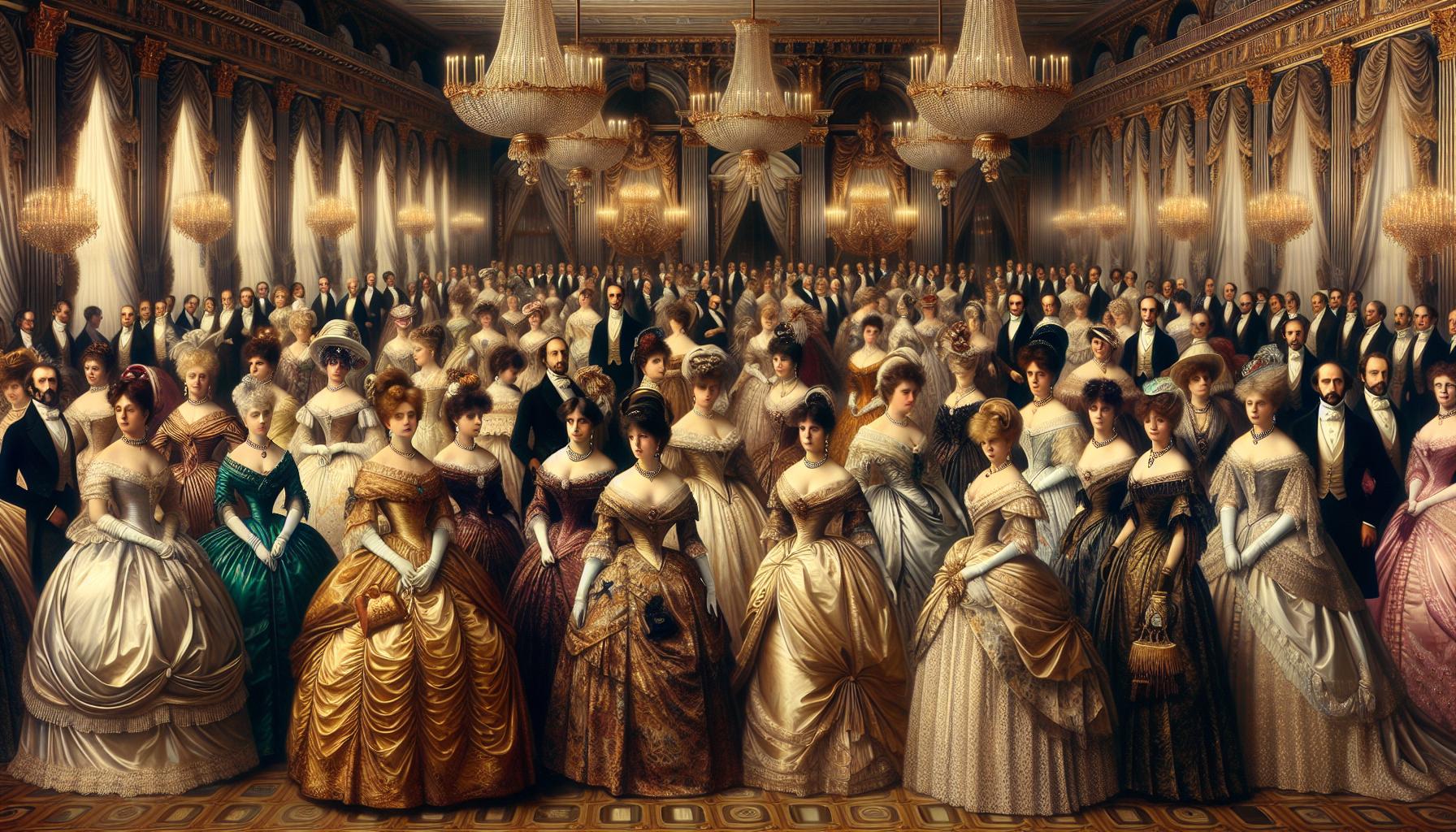In the 1800s, upper-class women didn’t just dress to impress—they dressed to dominate the social scene. Picture this: towering bonnets, voluminous skirts, and enough fabric to rival a small circus tent. Fashion wasn’t just about looking good; it was a carefully crafted statement of wealth and status. The higher the hemline, the higher the social standing, or so they thought.
But let’s not forget the absurdity of it all. Corsets so tight they could double as medieval torture devices and layers of petticoats that could hide a small family. Upper-class women navigated a world where fashion dictated not just their appearance but their entire lives. Dive into the dazzling yet ridiculous realm of 1800s women’s fashion, where every gown told a story and every accessory was a badge of honor.
Upper Class 1800s Women’s Fashion
Upper-class women’s fashion in the 1800s showcased the heights of extravagance. Elaborate gowns adorned with intricate details made a strong statement about wealth and social standing. Waistlines often rested just below the bust, creating a high-waisted silhouette that emphasized elegance. Sleeves varied widely, ranging from short puff sleeves to long, dramatic ones, each option enhancing the wearer’s sophistication.
Fabrics played a crucial role in the attire of these women. Luxurious materials such as silk, satin, and velvet dominated their wardrobes, often embellished with lace and embroidery. Colors were vibrant, featuring rich hues like deep reds, royal blues, and soft pastels, adding glamor to their appearances.
Accessories complemented their clothing and highlighted their status. Towering bonnets adorned with feathers and flowers framed their faces. Gloves, typically made from kid leather, reached the elbow, while jewelry featured pearls and precious stones that caught the light beautifully.
Undergarments greatly influenced the fashion of the day. Corsets provided structure, tightening the waist and shaping silhouettes to achieve an idealized form. Layers of petticoats created the voluminous skirts that became a signature of the era. While fashionable, the resulting constraints often limited women’s movement and comfort.
Social events dictated fashion trends throughout the century. Balls, soirées, and gatherings served as prime opportunities for showcasing one’s attire. Women often tailored their outfits to align with the latest styles featured in fashion plates and magazines, underscoring the competitive nature of upper-class society.
Each element of their ensemble contributed to a carefully curated image, reinforcing the notion that appearance was essential to identity and status in the 1800s. Fashion for these women transcended mere clothing; it encapsulated their roles within a complex social hierarchy.
Key Fashion Trends

Upper-class women in the 1800s presented striking styles that exemplified their wealth and status. Their fashion choices showcased a variety of elements, each contributing to an elaborate portrayal of identity.
Silhouettes And Styles
High-waisted silhouettes defined the era, emphasizing an hourglass figure. Gowns featured wide, flowing skirts that reached the floor, supported by layers of petticoats. Puff sleeves and fitted bodices added a dramatic flair to their outfits. Shorter hemlines emerged later in the century, revealing ankle-length skirts. Women often wore elaborate trains that trailed behind them, enhancing a sense of grandeur. Elaborate necklines, including boat and sweetheart shapes, showcased delicate collars or embellishments. Ultimately, these silhouettes and styles reflected not only their fashion taste but also societal expectations.
Fabrics And Materials
Luxurious materials dominated upper-class wardrobes, with silk and satin leading the way. Velvet, known for its richness, frequently graced gowns and evening wear. Fabrics often came in vibrant colors, including deep greens, rich reds, and soft pastels. Embellishments like lace and embroidery further elevated garments, creating intricate patterns and textures. Additionally, ribbons served as decorative accents on dresses and bonnets. Undergarments often consisted of tightly woven cotton or linen, enhancing the opulence of outerwear. Overall, the choice of fabrics and materials highlighted the importance of extravagance among elite women.
Influential Designers And Couturiers

Upper-class women’s fashion in the 1800s bore the unmistakable stamp of influential designers and couturiers. These fashion pioneers shaped styles while crafting an identity for elite women.
Prominent Fashion Houses
Christian Dior and Charles Frederick Worth led the way, establishing distinctive fashion houses known for exquisite craftsmanship. Worth pioneered the concept of the fashion show, presenting his collections to eager patrons. The House of Worth, founded in 1858, became synonymous with luxury, showcasing dramatic silhouettes and sumptuous fabrics. Another notable fashion house, Maison Léonard, catered to the upper echelons of society, emphasizing intricate details and lavish embellishments. Paris became a fashion capital, where trends originated and spread across Europe, influencing the wardrobes of affluent women everywhere.
Iconic Designers
Designers like Emile Pingat and Jeanne Paquin defined an era with their bold innovations. Pingat was famed for his opulent gowns and elaborate draping techniques, appealing to the tastes of high society. Paquin, one of the first female couturiers, gained recognition for her modern designs that combined elegance with ease of movement. Her work showcased vibrant colors and striking prints, setting new standards in women’s fashion. Both designers contributed to the evolving aesthetic, blending tradition with contemporary influences that characterized upper-class fashion in the 1800s.
Social Influences On Fashion

Fashion in the 1800s closely mirrored societal structures. Upper class 1800s women’s fashion attire reflected their rank, distinguishing them from lower classes. Class distinctions became apparent not only through style but also in fabric choice and accessory richness. Wealthier women donned luxuries like silk and satin, while those from less affluent backgrounds settled for more modest materials. Extravagant details often signified affluence, demonstrating the importance of appearance in a competitive society.
Cultural factors also played a significant role in shaping fashion trends. The emergence of fashion magazines in the mid-1800s popularized style news, making haute couture accessible to a wider audience. Paris became synonymous with fashion innovation, enticing women from various classes to emulate the styles of the elite. Furthermore, social events such as balls and soirées dictated styles, reinforcing conformity. As women sought to align with popular trends, they inadvertently shaped a culture deeply invested in appearance and status.
Upper-class Women
The upper class 1800s women’s fashion was a vivid tapestry of luxury and social commentary. Each gown and accessory told a story of wealth and status while also reflecting the restrictive norms of the time. The intricate designs and lavish materials not only showcased individual style but also reinforced the societal hierarchy that defined this era.
As trends evolved and designers emerged, the fashion landscape became a battleground for identity and prestige. Ultimately, the elaborate attire worn by these women was more than mere clothing; it was a powerful symbol of their place in a competitive society, forever shaping the narrative of women’s fashion history.

